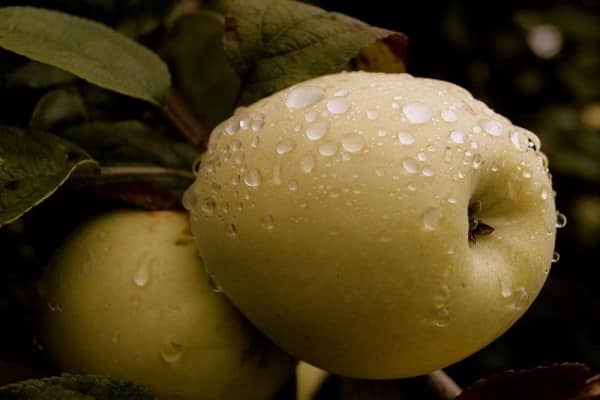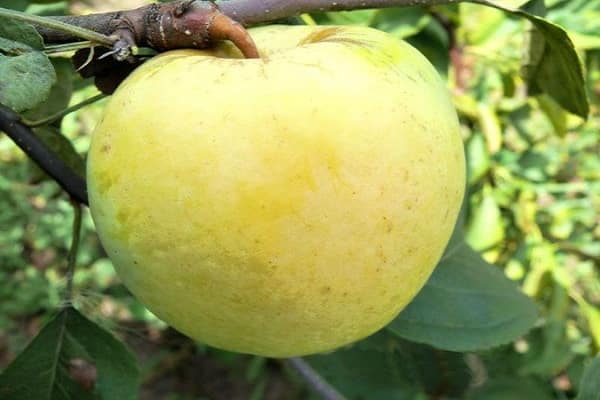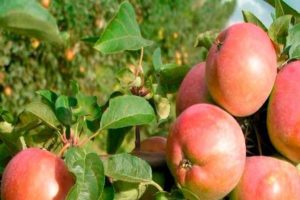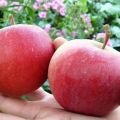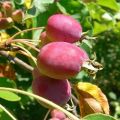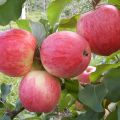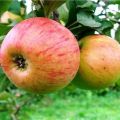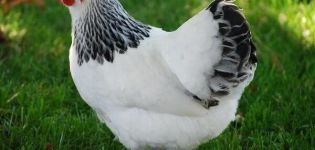Description of the Antonovka apple variety, characteristics and varieties, cultivation and care
The Antonovka apple tree is a good solution for any orchard. The fragrant fruits have been grown in Russia for almost 200 years. In the recent past, the variety was used in industrial horticulture, now it is relevant as a genetic material. Its varietal characteristics (frost resistance, taste, ripening period) are still relevant today.
Breeding history of the variety
By assumption, Antonov apples are not the result of scientific selection. The exact history of their origin is not known even to scientists. It is generally accepted that the variety is an accidental hybrid, which is obtained by crossing a wild apple tree with a cultivated form.
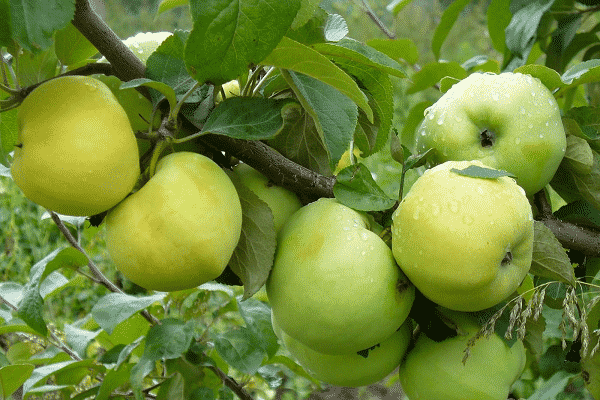
For the first time, an apple variety was presented to the scientific community by S.V. Batov at an exhibition held in Novgorod (1896). In honor of Anton, an amateur gardener, in whose garden the apple tree was found, he named it Antonovka Tulskaya, another name is Antonovka Dukhovaya. The second name was given for the unique aroma of ripe apple fruits.
As an official variety, Antonovka was described by the pomologist MV Rytov in his book “Russian Apples” published at the beginning of the 9th century. Later (1929) IV Michurin was engaged in a detailed study of the varieties of Antonovka. In his works there are descriptions of 26 varieties of Antonovka.
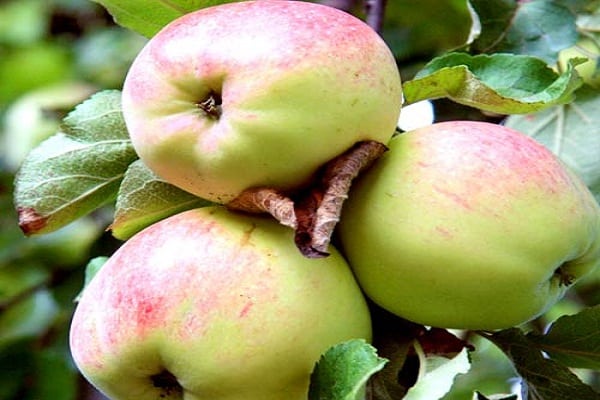
Growing areas
Fragrant apples are still loved by summer residents, despite the abundance of new hybrid forms and varieties. Regions and areas where you can find different varieties of Antonovka in the gardens:
- Moscow;
- Penza;
- Tula;
- Bryansk;
- Kursk;
- Voronezh.
These varieties of apple trees are grown in Belarus, in Ukraine. Separate, especially frost-resistant varieties can be found in the gardens of Altai, Ural, Siberian summer residents, Antonovka is also grown in the climate of the Far East.

Descriptions and characteristics of the variety
The Antonovka brand unites more than 200 varieties of cultivated apple trees. They all grow in different climatic zones. Varietal characteristics, lifespan for different Antonovka species may differ, the climate affects them. Trees are long-lived. The fruiting period can last up to 40 years. In the scientific literature, there is a description of single specimens that have reached 200 years of age.
Tree height and crown width
As it matures, the apple tree reaches an impressive size. The main skeletal branches are powerful, diverging widely to the sides, forming a spreading crown resembling a ball. Its diameter can be up to 10 meters with a tree height of 6-8 m.
Despite such an impressive size of the branches, they do not need props. They safely withstand the load in the most productive years. The bark on the shoots of the apple tree is brown, the color of the leaves is bright green. The shape of the leaf plate is oval, the surface is wrinkled, the edge is uneven. During the flowering period, the apple tree is covered with large white-pink flowers.
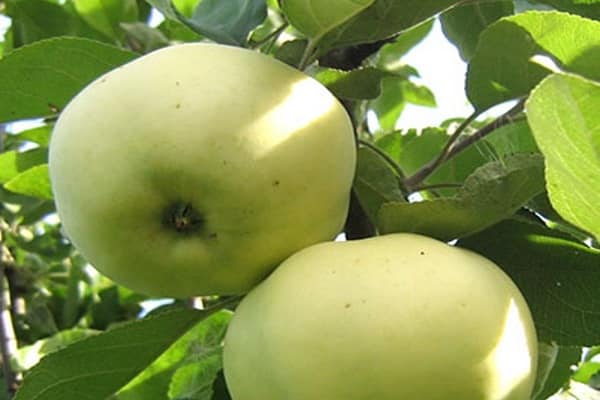
Description of fruits
Antonovka fruits are rich in pectin (14%), sugars (9.2%), contain:
- ascorbic acid;
- P-active and tannins;
- one percent titratable acids.
The shape of the fruit is round, with a slight ribbing at the bottom. The pulp is creamy with a yellowish tinge. It tastes sweet and sour, contains a sufficient amount of juice. Her aroma is rich and pleasant. The skin is green with a yellow tint; it turns yellow during storage.
Apples fall into the category of large, their average weight is 120-150 g. Larger fruits weighing up to 300 g are rare. Ripe fruits can be stored for 3 to 4 months. More sweetness develops over time.
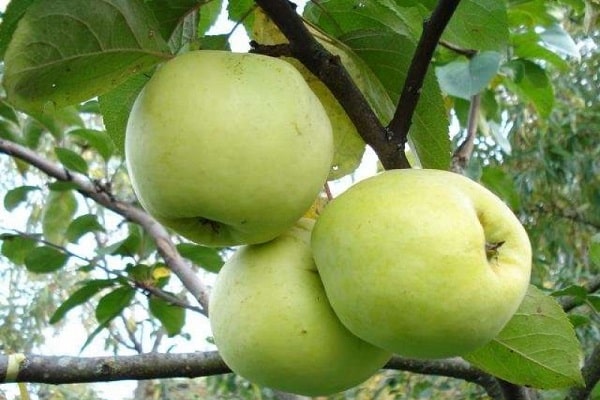
Pollination
All subspecies of Antonovka need pollinators. In the garden, you must have several fruiting apple trees in order to be with a harvest of fragrant apples in the fall. Proven varieties that increase Antonovka's yield:
- Pepin is saffron;
- Welsey;
- Anise.

Ripening period
Varieties of Antonovka differ in terms of ripening. All of them are late, they are referred to as winter forms, maturing for 110-120 days. Fruit picking starts after September 15-20.
| Variety | Pickup time | Removable maturity time | Time of consumer ripeness |
| Dessert | September 10-25 | September 20 to October 6 | From October 6 to March 5 |
| Ordinary | September 21-30 | October 1-10 | From October 11 to April 5 |
| Gold | |||
| New |
Harvest
The end of September is the period for picking ripe apples. It can last until mid-October. The harvest grows as the tree matures. According to statistics, a healthy 20-year-old apple tree yields about 200 kg of fruits. Record yields have been recorded - from 500 to 1000 kg per tree.
In the first half of life, apple trees bear fruit annually, later fruiting becomes periodic, the first year the tree blooms and bears fruit, and in the second it rests. The entire crop must be harvested before the first autumn frost. They ripen and acquire a characteristic golden-yellow color during storage.
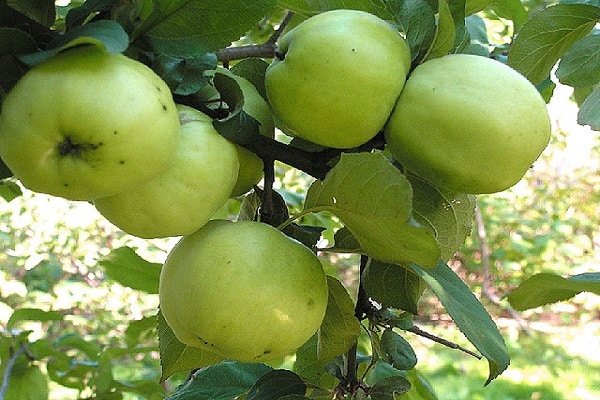
Transportability and storage
The fruits of Antonovka grown in the northern regions of the Russian Federation are stored longer. The harvest of southern varieties retains its consumer properties for 2-3 weeks less. In order to feast on aromatic, tasty fruits longer, apples are stored according to certain rules:
- do not shake the tree, remove the fruits from the branches by hand, let the fallen apples for processing;
- for winter storage, collect fruits 1-2 weeks before the onset of technical ripeness;
- treat storage containers with a fungicide;
- transfer apples carefully so as not to damage the skin;
- discard and process damaged fruits;
- put fruits in a container in layers;
- store the crop at a temperature of +2 ° C.
In the room where Antonovka is kept, it is necessary to equip a ventilation system.
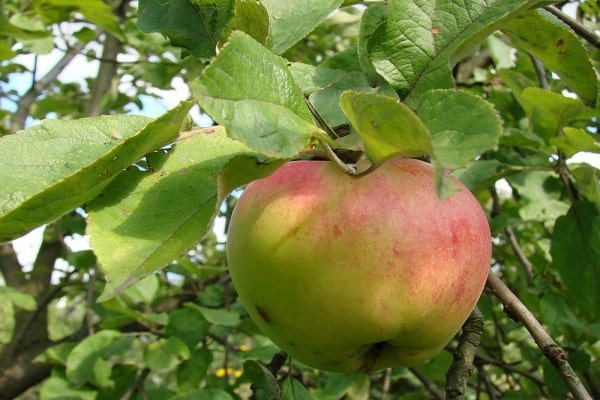
Frost resistance
The frosty winters of Antonovka are not scary, apple trees are grown without problems by summer residents of the North-West region. In terms of frost resistance, only Cinnamon striped, Anis and Grushovka Moskovskaya compete with it.
Mature trees are frost-resistant, young seedlings can freeze slightly in winters with little snow, they also suffer from early autumn frosts. To protect the roots from freezing, the trunk circle is mulched, and the bole is wrapped with newspapers, old burlap, and covered with spruce branches.
Disease and pest resistance
A systematic approach to disease prevention and good agricultural practices reduce the likelihood of disease to a minimum. Antonovka vulgaris is resistant to scab. The probability of powdery mildew on the leaves of Antonovka is average.
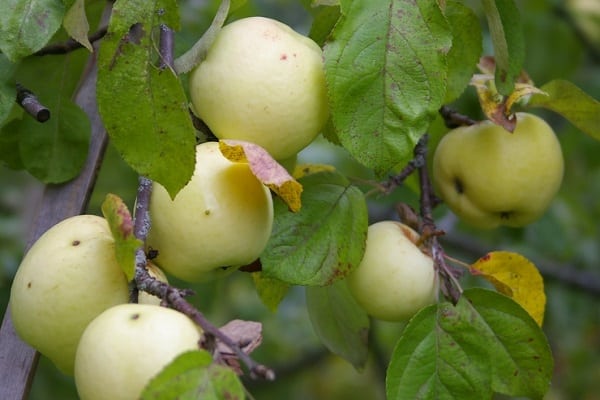
Tree planting rules
Growing a fruitful tree takes years. A lot of time passes before the apple tree delights with the fruits. The health of the future apple tree is influenced by the quality of planting, the correct choice of place and subsequent care.
Optimal timing
Planting is carried out in the spring. They begin planting work after the soil has warmed up to 5-10 ° C. At this time, the buds on the fruit trees swell, but do not bloom. In areas with warm winters, early autumn planting is allowed.
The time of planting is calculated so that the seedling has time to take root. On average, it takes up to 2-3 months for rooting.
Site selection and preparation
Waterlogging negatively affects the root system of Antonovka. This is taken into account when choosing a location. The best solution is the southern or southeastern part of the garden, protected from the north wind and draft. Apple trees grow well on the southern slopes.
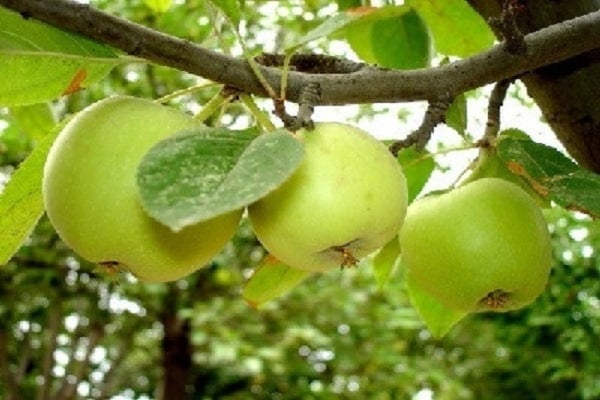
The site should be well lit by the sun, the presentation and taste of the fruit depends on the degree of illumination. The more sun there is, the juicier and tastier the apples. There are no special requirements for the soil, but the tree develops and bears fruit better on black soil and loam.
In the fall, the site is prepared for planting:
- dig up;
- choose the roots of the weeds;
- organic matter is introduced - rotted manure 6 kg / m², peat 10 kg / m²;
- mineral fertilizers are added (superphosphate 30 g, potassium salt 35 g).
We prepare seedlings
Any seedling is inspected before planting. Roots are tested for freezing; for this, a small incision is made. A yellow or brown cut is a sign of frost-damaged tissue.
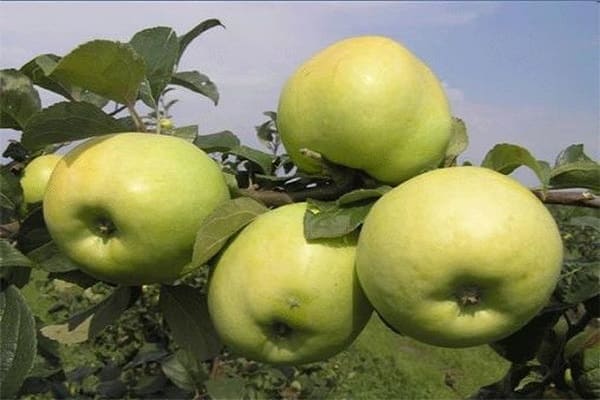
All roots affected by frost are cut out rotten and dried out. Work is carried out with a clean and sharp instrument. Seedlings with a dried root system are soaked for 2 days in water. If after this time the plant has not had time to recover, then it is thrown away.
Process and scheme
When planting fruit trees in rows, rows are outlined in increments of 5-6 m. In a row, the distance should be 3-4 meters. The numbers are not taken from the ceiling. The crown of an adult tree is wide (up to 8 m), this is taken into account, and holes are dug in 3-4 m steps. A support stake up to 1.2 m long is installed in the prepared hole, and a hill is formed in the center.
The tree is placed on it, the roots are spread over the surface of the hill. The hole is covered with fertile soil, tamped without much pressure so as not to disturb the root system. Make sure that the root collar is not covered with earth, it should rise 5-7 cm above the ground level. Finally, the seedling is well watered and tied to a peg.
Seasonal apple care
The variety is picky, but requires care. The complex of seasonal care includes preparation for planting the soil, organization of watering and feeding.
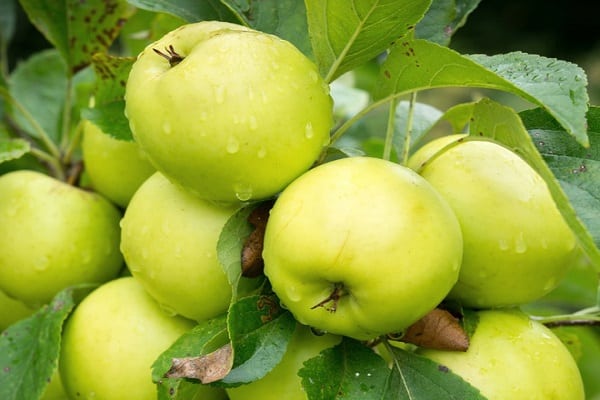
Soil care
Care begins in the fall and early spring. They dig up the earth in the aisles, loosen the trunk circle. A standard set of fertilizers is introduced: superphosphate, potassium nitrate, ash. In the spring - carbamide. After application, the soil is watered abundantly.
To retain moisture, the soil is mulched. Any organic material can be used:
- peat;
- sawdust;
- humus;
- compost;
- manure.
The use of manure has a good effect. Moisture in the soil is retained, the plant receives nitrogen fertilization. The thickness of the mulch layer is 8 cm.
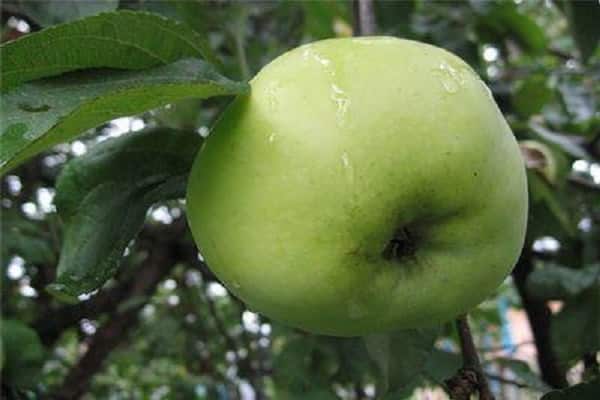
Fertilization
In order for the apple tree to tolerate winter frosts well and not get sick, feeding is carried out three times.For the first time, dry mineral and organic fertilizers are applied at the beginning of spring during soil cultivation.
Before flowering, trees are watered at the root with a solution of mineral fertilizers or infusion of mullein. The fertilizer rate is taken from the instructions, the mullein infusion is diluted with water 1:10. Any top dressing is combined with abundant watering, this helps prevent chemical burns of the roots.
Disease and pest control
In northern regions, where summers are damp and cool, apple trees are prone to scab of fruits and leaves. In areas where winters are warm, trees suffer from powdery mildew. Garden pests are dangerous in all climates, especially for young seedlings.
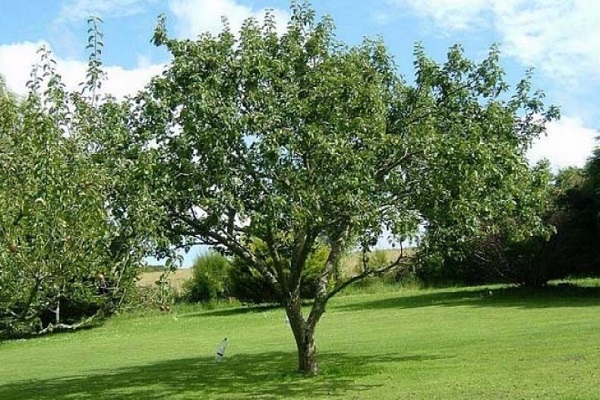
Preventive measures that reduce risks:
- collection and destruction of fallen leaves;
- autumn digging of near-trunk circles and row spacings;
- whitewashing of skeletal branches and trunk;
- autumn processing of the crown with copper sulfate;
- early spring treatment with pesticides (Nitrafen, DNOC);
- 3-fold treatment against the invasion of pests "Fufanon" during the growing season;
- in order to prevent scab, trees are sprayed with fungicides "Skor", "Horus", "Fitosporin".
To save the crop from scab, use the "Strobi" remedy. Treatment carried out in the initial phase of the disease stops the development of the disease. The prevention and treatment of powdery mildew is carried out in the same way as scab.
Of the pests, the crop is threatened by the moth, its larvae (caterpillars) eat apples. Other harmful insects, scale insects, aphids, apple blossom beetle, rare guests on Antonovka. Traditional preventive measures are used to protect against them.
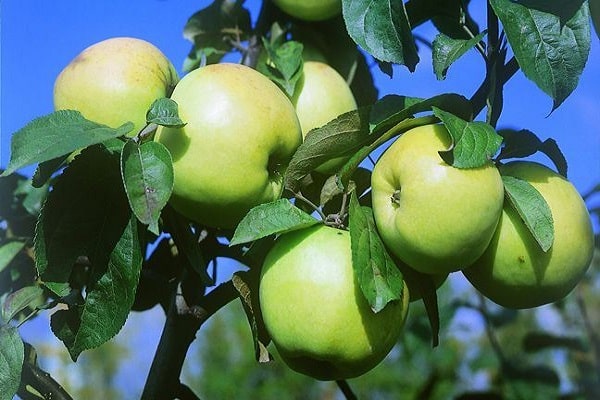
Pruning and shaping the crown
They begin to engage in the crown of the apple tree when the tree reaches 2 years of age. From this year and then every year at Antonovka, pruning of damaged and weak branches is carried out. If desired, formative pruning of a 2-year-old seedling is carried out:
- cut off the top of the central shoot;
- skeletal branches are shortened by a third of the entire length.
As the crown grows and fills, the lateral shoots of the apple tree are periodically shortened. In twenty-year-old trees, a third or half of all perennial ringlets are cut out.
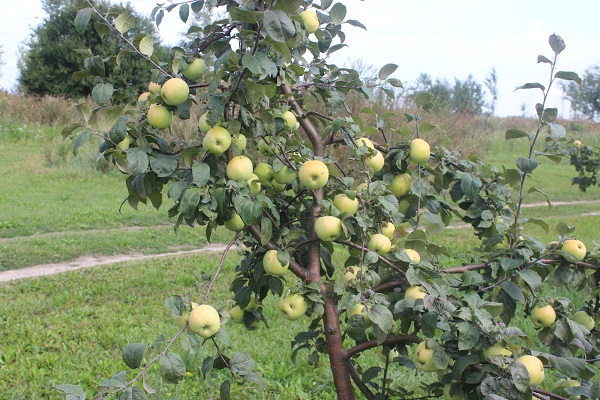
Protection from cold weather and rodents
The trunks of young seedlings in the first years are protected from pests - they are covered with a solution of chalk, adult trees (trunk, branches) can be whitewashed with lime. From rodents and low temperatures, the bole is wrapped with old burlap, netting or spruce (pine) spruce branches.
Mulch is poured over the entire area of the tree trunk circle so that the roots do not freeze in winter. Use what is available:
- compost;
- humus;
- rotten sawdust;
- peat.
The layer of mulch for full protection of Antonovka roots from freezing should be at least 10 cm.
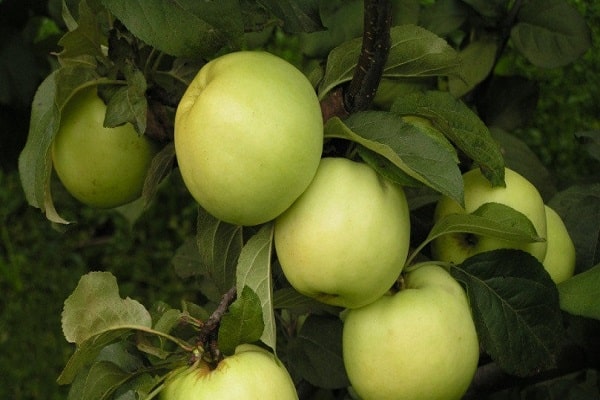
Features of the flowering and fruiting period
Ovaries appear with cross-pollination. You can be left without a harvest of apples if there are no other apple pollinators in the garden.
Ripening dates and how to determine the ripeness of apples
Most of Antonovka's apple trees ripen late. They begin to be harvested before the onset of technical ripeness. On average, the timing of collection of popular autumn-winter varieties of Antonovka falls in the autumn months (September, October).
In August, only the summer forms of Antonovka ripen, which differ in a less intense taste and a short shelf life. Summer residents in the Moscow region harvest apples in the last days of October, the same varieties in Ukraine and the Krasnodar Territory ripen in the last decade of August and early September.
Ripe apples are identified by the color of their seeds. If they are white, then the fruit is not ripe, if brown, then ripe. Apples for storage are recommended to be removed unripe, they reach during maturation. The skin changes color during storage, the taste of the pulp becomes more intense.
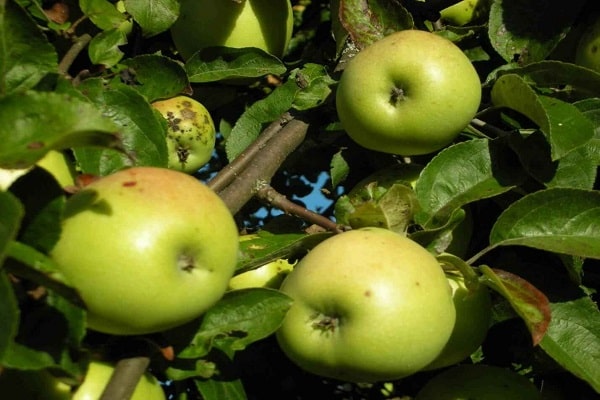
Existing species
The data collected by scientists indicate the presence of a large number of subspecies of apple trees.The main characteristics of the old and relatively new forms of Antonovka have few differences. The most common varieties are shown in the table.
| Variety | Feature |
| Antonovka Repchataya | Long-term storage of fruits |
| Antonovka Stepnaya | Grown in regions where summers are dry |
| Antonovka Belaya | Found in Belarus |
| Antonovka Sweet | Very little is stored |
| Antonovka Autumn | Lying, fruits are large |
Ordinary
The fruit is rounded with ribbing. During the harvest period, the color of the apples is green, with a slight yellow tint. Antonovka's skin turns yellow during storage. The pulp is sweet and sour taste, light yellow, granular structure. The fruits of the apple tree are fragrant and sweet, the sugar content in the pulp exceeds 9%.
Advantages of Antonovka ordinary:
- winter hardiness;
- high-quality raw materials for various kinds of blanks;
- seedlings are used as a stock;
- fruits tolerate long-term transportation well;
- crumbling is low.
Disadvantages of an apple tree: medium (weak) resistance to scab pathogens, irregular fruiting.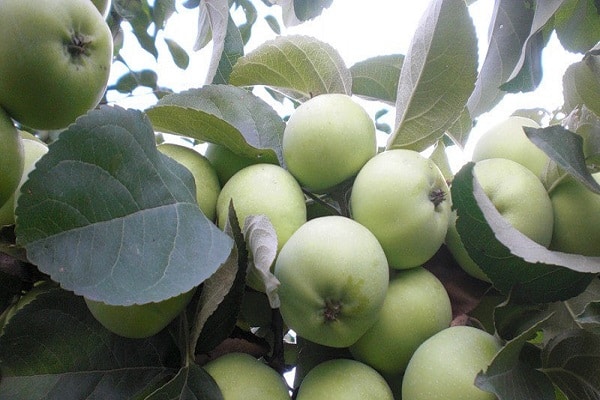
Dessert
The work of SI Isaev, he used the genetic material: Pepin Shafranny, Antonovka ordinary. Winter hybrid. The growth of the tree is average, the crown acquires a rounded shape with age, in the first years it is spherical.
Green leaves with a yellow tint have jagged edges along the edge. The flowers are white-pink, large. Description of fruits:
- weight 200 g;
- slightly sour taste;
- light green skin, cream tint;
- the blush is red-striped;
- aromatic pulp.

The yield is influenced by the level of agrotechnical background. The average yield per tree is 40-120 kg. Fruiting earlier, begins at 3 years. The fruits can be stored for up to 6 months. The resistance of the apple tree to frost is average. Regions recommended for growing Antonovka dessert:
- south of the Russian Federation;
- Central strip;
- Ukraine;
- Belarus.
In areas where winters are harsh, only frost-resistant stock is used. In the gardens of the Urals, the hybrid is grown in stanza form.
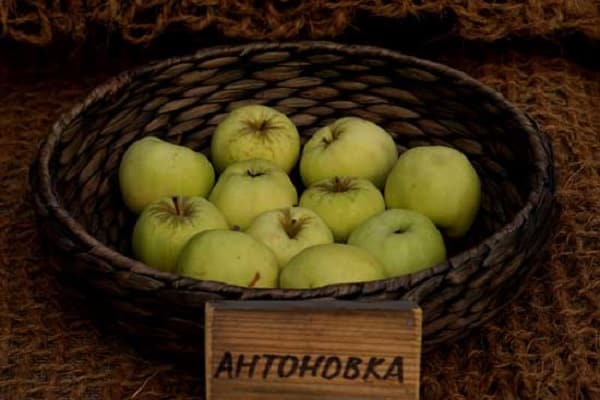
Gold
Antonovka ripens in the last decade of August, according to the ripening period it is included in the group of late summer varieties. The fruits are not stable. Unlike other varieties, the taste does not become more intense during storage. The average fruit weight is in the range from 150 to 180 g. The peel of the apples is straw-yellow. It begins fruiting 5 years after planting. The advantage of Antonovka Golden is the resistance of the variety to the scab pathogen.
Antonovka New
Selection of S.F. Chernenko, the variety was created for cultivation in the Central regions of the Russian Federation and the gardens of the Chernozem region. Antonovka ordinary and wonderful apple tree of national selection Babushkino were taken as genetic material. The maximum productivity of Antonovka Novaya was recorded at the level of 445 kg, the usual indicators of apple-tree productivity fluctuate within 200 kg.
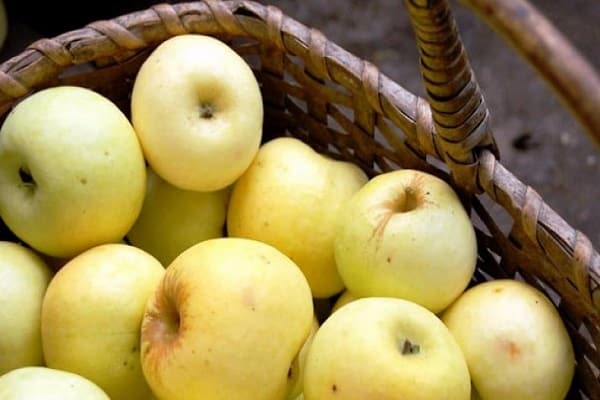
The plant is tall, its height is from 5 to 6 meters. The crown of Antonovka is wide, up to 8 m, spreading, not prone to thickening, has a rounded shape. Fruit characteristics:
- weight up to 120 g, individual copies up to 200 g;
- the skin is light yellow;
- blurred blush, red;
- the structure of the pulp is dense, the color is white, juiciness is present;
- classic sweet and sour taste, spicy notes are present;
- moderate aroma;
- the shape is onion, regular, there is a slight ribbing.
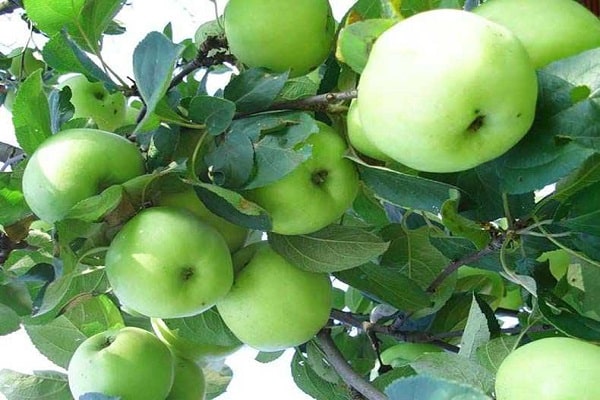
The beginning of fruiting of an apple tree falls on the 4th or 5th year of life. The collection time for Antonovka is from late September to mid-October. Consumer ripeness occurs in November-December, fruits are stored until February. Advantages of Antonovka Novaya: winter hardiness, productivity. The disadvantage is susceptibility to scab.
Gardeners growing Antonovka give a positive assessment of the adaptive abilities of the apple tree. The productivity of trees depends on the climate and the quality of summer and autumn care. The harvest is stored for a long time and serves as an excellent raw material for jams, preserves, liqueurs, liqueurs, and recipe for soaked apples was invented specifically for Antonovka.
